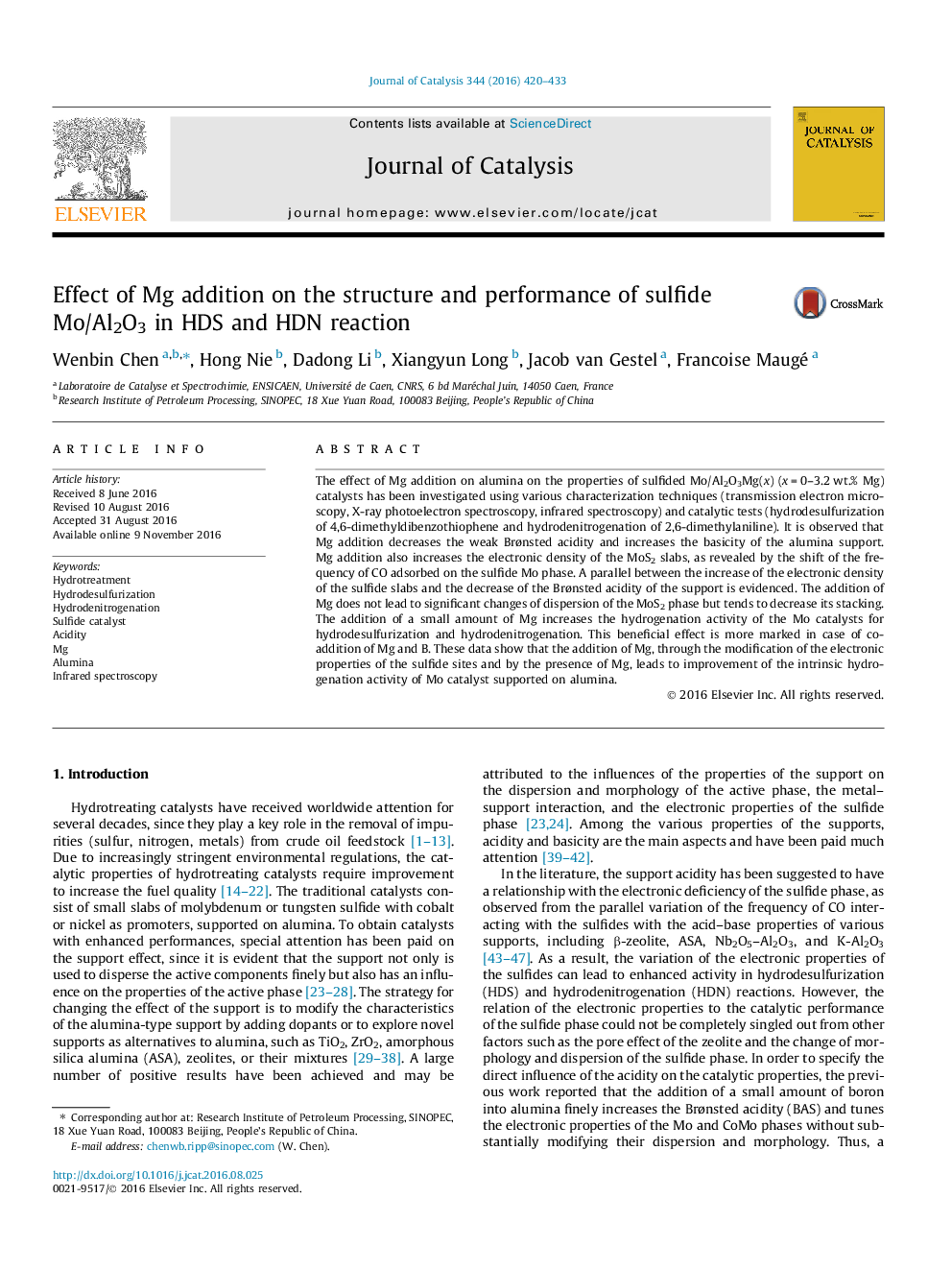| Article ID | Journal | Published Year | Pages | File Type |
|---|---|---|---|---|
| 6455844 | Journal of Catalysis | 2016 | 14 Pages |
â¢Mg addition decreases the weak Brønsted acidity of alumina.â¢Decrease of Brønsted acidity affects the electronic properties of the MoS2 phase.â¢Hydrogenation activity of MoS2 is balanced by electronic properties and Mg element.â¢O2â sites on the support may be beneficial for hydrogenation activity by spillover effects.
The effect of Mg addition on alumina on the properties of sulfided Mo/Al2O3Mg(x) (x = 0-3.2 wt.% Mg) catalysts has been investigated using various characterization techniques (transmission electron microscopy, X-ray photoelectron spectroscopy, infrared spectroscopy) and catalytic tests (hydrodesulfurization of 4,6-dimethyldibenzothiophene and hydrodenitrogenation of 2,6-dimethylaniline). It is observed that Mg addition decreases the weak Brønsted acidity and increases the basicity of the alumina support. Mg addition also increases the electronic density of the MoS2 slabs, as revealed by the shift of the frequency of CO adsorbed on the sulfide Mo phase. A parallel between the increase of the electronic density of the sulfide slabs and the decrease of the Brønsted acidity of the support is evidenced. The addition of Mg does not lead to significant changes of dispersion of the MoS2 phase but tends to decrease its stacking. The addition of a small amount of Mg increases the hydrogenation activity of the Mo catalysts for hydrodesulfurization and hydrodenitrogenation. This beneficial effect is more marked in case of co-addition of Mg and B. These data show that the addition of Mg, through the modification of the electronic properties of the sulfide sites and by the presence of Mg, leads to improvement of the intrinsic hydrogenation activity of Mo catalyst supported on alumina.
Graphical abstractDownload high-res image (53KB)Download full-size image
